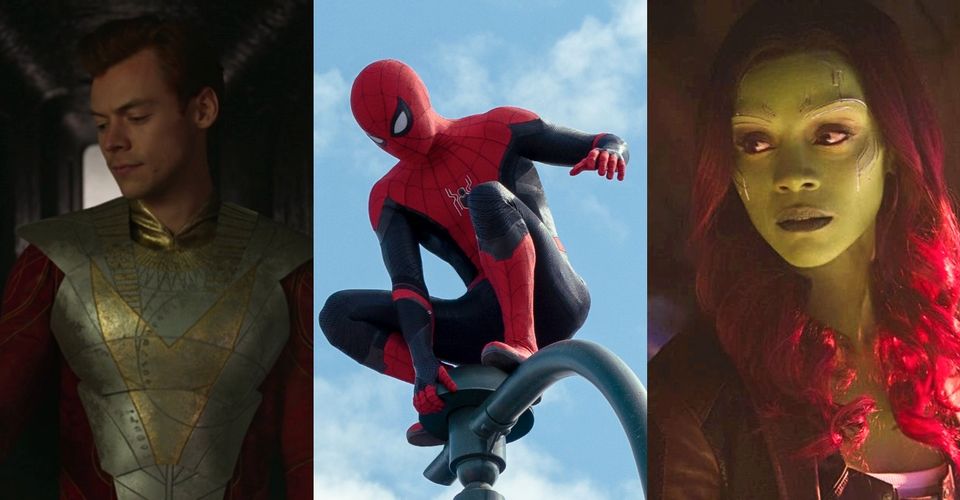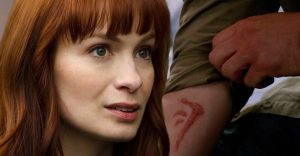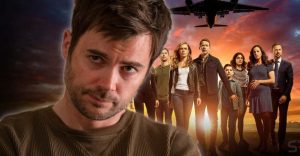10 Biggest Tropes Associated With The MCU

The Marvel Cinematic Universe has developed its own unique language which fans are absolutely familiar with. These tropes help to paint the comic book world, but that doesn’t mean they have become too repetitive. Sometimes, the use of these tropes actually ends up in a great deal of fan service!
Whether it’s how specific character arcs are handled, certain expectations audiences have of an MCU project or a couple of comedic beats that have shown up time and time again, these tropes will surely be well-known for those who have consistently kept up with this superhero landscape.
The Superhero Landing

The superhero landing has become a bit of a gag for the likes of Deadpool, who loves to break the fourth wall of the Marvel Universe. It’s a pretty common pose that is usually used in the height of an action sequence; it’s odd to see a hero land normally now.
Although it might not actually make a lot of sense, considering there is a huge risk of a leg injury, the trope can really be traced back to Iron Man. There’s a particularly iconic shot where Tony Stark lands the superhero pose in his Iron Man armor, and it has since been copied numerous times.
Post-Credit Scene

The post-credit sequence has become synonymous with Marvel, which ensures that fans are never left disappointed. Although some are a little underwhelming and don’t contribute much to the wider universe, for the most part, these short clips tease what’s about to happen next.
Character debuts are a huge part of the post-credit sequence, as are shocking returns from villains and vigilantes that audiences haven’t heard from in a long time. It would seem out of place now, to wait for the credits to finish and not be rewarded with a scene.
Major Cameos

Cameos are a huge part of the MCU experience, as fans try to predict which characters might show up next. Whether they are from the comics and are making their debuts, or perhaps were featured in previous projects, these cameos always drum up excitement.
That all comes down to the cinematic universe concept, where these iconic figures can actually crossover with one another. With so many more stories to tell, it’s become a trope at this stage to include someone from outside of the title to help expand this comic book world and set up new narratives.
The Costume Reveal

It’s pretty common for an MCU hero, villain, or even henchmen to get a new costume throughout the course of their film. Part of the reason for this is usually to sell more toys, but it’s also fun for fans to pick out interesting details that have clearly been inspired by the source material.
There’s always a rousing sequence that sees the new costume unveiled for the first time. The trope is becoming more and more common as heroes return again and again with slightly alternative looks. With so many other suits to adapt there’s going to be no end to this trope.
Humor Undercutting Tension

Perhaps it’s a trope that’s developed into a flaw, but it’s likely that a moment of dramatic weight or tension could be undercut by a joke or a more humorous sequence. It’s largely to ensure that these films are still entertaining even when they are trying to be emotionally complex.
Not every one of these jokes lands its fair to say and sometimes the MCU needs to allow its characters to sit in these beats of tension, before moving on to the larger adventure at hand. Ultimately though, the trope has set the tone for the overall universe.
Hero Themes

The music of the MCU was certainly lacking in the early days, but recently that has been more than made up for with this next trope. Hero and indeed villain themes are now a huge part of the fabric of this universe, with a well-known melody accompanying each character.
The likes of Killmonger or Captain America have such iconic themes now, which continue to develop across the multiple properties they are associated with. With each new individual, a new theme is brought into the mix that adds to the much larger tapestry. Not every franchise has unique character scores.
Parallel Powers

Another trope that might be deemed a flaw is the notion that the villain of the film or TV show has to have the same costume, powers, and skills as the original hero. It’s become all-too-common now, as the likes of sorcerers fight other magic users, while size-shifters battle their equal.
There’s something poetic about the choice, but it’s also quite boring now, considering almost every character has to go on this same journey. Visually these moments of action end up being far more interesting when there are completely different powers at play.
Easter Eggs

From the very first installment of the MCU up until now, there have been easter eggs shuffled throughout every project, in the hope that fans will spot them and connect them either to the comic books or the wider set of film franchises. It’s a genius way to really world-build further.
The trope is so common now that audiences are prepared to search for easter eggs throughout any given series or movie, with the aim of working out what’s coming next for the saga. Something as simple as a mentioned location or as iconic as Cap’s shield have led to much bigger things.
Redeeming A Villain

Sometimes villains don’t stay villainous for very long. Oftentimes fans are so drawn to an antagonist that Marvel is forced to create a redemption story for them. Loki is a great example of that, as is Zemo and the likes of Agatha Harkness is about to go on that same journey.
It makes sense in order to expand the world further and ensure that more unique stories could be told with these characters, in a completely different way. But also, the trope is a little tired when some of the best villains end up being heroes and therefore can’t live up to their potential.
Parental Problems

It’s part of the territory of superheroes that there appears to be some kind of trauma within their family, which ends up informing the character. So many of these individuals have issues with their parents though, from Gamora and Thanos to Shang-Chi and the real ‘Mandarin.’
The trope has been a crucial part of the journey of these heroes and often plays into their movie in some capacity; whether it’s coming to terms with loss, understanding what their legacy really is, or actually trying to defeat the sinister plans of their parents.
About The Author

















